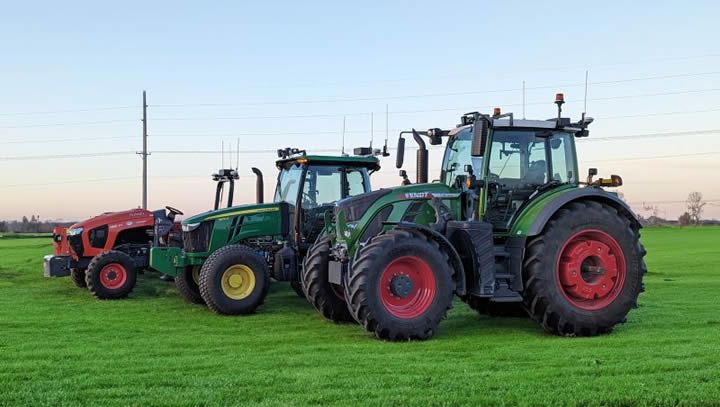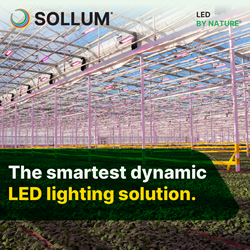This approach lets farmers deploy multiple autonomous systems for the cost of one traditional machine. That creates flexibility without tying up capital in one massive investment. It’s called redundancy.
 Retrofitting Existing Machinery with Autonomy
Retrofitting Existing Machinery with Autonomy

Q&A with Craig Rupp, Founder and CEO | Sabanto
Tell us about yourself and your role with Sabanto.
I grew up on a farm in northwest Iowa - corn, soybeans, hogs, and cattle. I was the spare, not the heir. When I graduated high school, I wanted to go down a path other than farming. I became an electrical engineer and headed to Chicago to work at Motorola in the cellular industry. I spent the majority of my career developing technology for every handset manufacturer. My career took a brief pause from cellular and I worked at John Deere, developing the StarFire receiver and Greenstar display. That was really the start of my pivot into the AgTech world.
 In 2012, I was working with Apple on their iPad and could not get out of my mind the idea that this was what the Greenstar display should have been with all the memory, graphics, connectivity, applications, portability, battery life, etc. I started a company called 640 Labs and developed what’s not referred to as the FieldView Drive. We were acquired by Monsanto and I spent four years working closely with farmers.
In 2012, I was working with Apple on their iPad and could not get out of my mind the idea that this was what the Greenstar display should have been with all the memory, graphics, connectivity, applications, portability, battery life, etc. I started a company called 640 Labs and developed what’s not referred to as the FieldView Drive. We were acquired by Monsanto and I spent four years working closely with farmers.
I could not believe how much the farming industry has changed since I left the farm back in 1984. I still remember a farmer telling me, at the time, the rule-of-thumb was tractors costing $1000/HP, sitting in a 500 HP tractor, wondering how he convinced his wife this machine was worth the investment. When I ever asked a farmer what keeps them up at night, it seemed their standard response was labor. I spent a decade automating manufacturing lines with robotics in the cellular industry, I grew up on a farm, I can hold my own with agriculture. I thought to myself, autonomy is the answer and I could certainly do something about it.
What are the biggest financial hurdles farmers face today when it comes to upgrading or maintaining their machinery?
I contend that farm machinery is the most widespread, expensive, underutilized capital there ever was. I know of no other industry that spends so much for capital that sits idle for the majority of the year. As of this writing, one can spend over $1.2M for a tractor? This is unsustainable.
I think the real problem is the current system is not scalable. Consider the simple case of a farmer having just enough planting capability to cover his 10,000-acre farming operation. If he acquires another, say 1,000 acres, he’ll have to reasonably spend another $2M to take on those additional acres. Per the ASABE methodology, depreciation alone over 10 years would cost him $160/acre/year for that equipment. It just doesn’t pencil out.
How is Sabanto’s autonomous technology helping farmers like Justin Yirsa in Montana avoid massive equipment costs—such as the $2 million price tag he sidestepped?
Justin Yirsa, a wheat farmer in Montana, is a great example of why our approach matters. He looked at the cost to replace his aging machinery, over $2 million, and knew that wasn’t the path forward.
Instead of doubling down on big iron, he invested in our vision: smaller, less expensive equipment and longer run hours. After crunching the numbers on horsepower and implement sizes, he landed on a John Deere 5115M and a 15-foot drill. That choice saved him $1.8 million in capital expenses.
Justin said it best, “Sabanto’s autonomous technology is making me rethink how I farm. I want to spend my capital on land, not equipment.” That mindset shift, from pouring money into machines to investing in appreciating assets, is what we’re enabling. It’s not just about lowering costs. It’s about reimagining what growth in ag looks like.
Can you explain how retrofitting existing machinery with autonomy compares cost-wise to purchasing new traditional equipment?
The difference is night and day. A new tractor can cost over a million before you factor in labor, maintenance, or fuel. For most farms, especially smaller ones, that’s just not sustainable.
Retrofitting, on the other hand, offers a smarter path. Our kits cost a fraction of a new conventional machine and can be installed on tractors farmers already own. Their next generation autonomous tractor is already sitting in their machine shed. That stretches the lifespan of existing equipment while cutting operating costs and reducing the need for more labor.
Even better, this approach lets farmers deploy multiple autonomous systems for the cost of one traditional machine. That creates flexibility without tying up capital in one massive investment. It’s called redundancy. Say you replace your large single machine with three smaller ones, if one goes down, you still have 66% throughput. If your large system goes down, you’re at 0%.
How does automation impact the long-term economic sustainability of smaller or mid-sized farms?
When I started this company, I asked myself, “How did we get to this point?” It’s obvious to me. The machinery companies are building their equipment to cover as many acres as they possibly can with an operator in the seat.
With autonomy, the equation changes. The equation? I’ll refer to James Watt’s equation:
Which states, for a given amount of work, horsepower and time are inversely proportional. At its core, autonomy increases the amount of time available for field operations. This increase in time will decrease horsepower. The future is smaller equipment working in a swarm.
What’s really interesting is how this will transform the used equipment market. Imagine a 10,000 acre farmer using three smaller systems. That used system can certainly be sold to a smaller 1,000-acre farmer. This is not the case for the used 700+ HP tractor.
What kinds of returns or savings are farmers seeing after adopting your autonomous technology, and how quickly?
Our farmers are seeing break-even returns in under six months. That’s in thanks to a combination of lower equipment costs and extending operating hours - all without requiring additional labor.
With autonomy, one operator can run multiple units, significantly reducing payroll while covering more acres. Because we retrofit, farmers don’t need to make a massive capital investment up front. That’s a huge advantage, especially in labor-intensive sectors in agriculture.
Do you believe affordable autonomy is key to the next era of agricultural productivity—and if so, how is Sabanto positioning itself to lead that shift?
Absolutely. For too long, ag has been defined by a “bigger is better” mentality. More horsepower. Larger implements. It made sense when someone had to be in the driver’s seat. Now we’re shifting to a new era of agriculture where autonomy causes us to rethink productivity.
At Sabanto, we’re building systems that let farmers do more with less - smaller machines, longer hours, and smarter decisions. We’re leading this shift by focusing on accessibility. Our kits work with equipment farmers already have, which removes one of the biggest barriers to adoption. It’s not about replacing everything. It’s about utilizing what’s already in the machine shed.
Autonomy is about giving farms of all sizes the tools to thrive in a rapidly changing industry. And we’re just getting started. Get ready!
Craig Rupp is the Founder and CEO of Sabanto, an agtech company pioneering autonomous farming technology. A lifelong farmer and seasoned engineer, Rupp began his career at Motorola and John Deere, where he helped develop precision ag tools like StarFire™ GPS and GreenStar™ displays. He went on to found multiple tech companies, including 640 Labs, which was acquired by Monsanto for its breakthrough in real-time farm data collection. At Sabanto, Rupp is revolutionizing agriculture by retrofitting traditional tractors with autonomous capabilities—dramatically reducing labor and increasing efficiency. Under his leadership, Sabanto became the first company to complete fully autonomous row crop planting
The content & opinions in this article are the author’s and do not necessarily represent the views of AgriTechTomorrow
Comments (0)
This post does not have any comments. Be the first to leave a comment below.
Featured Product

